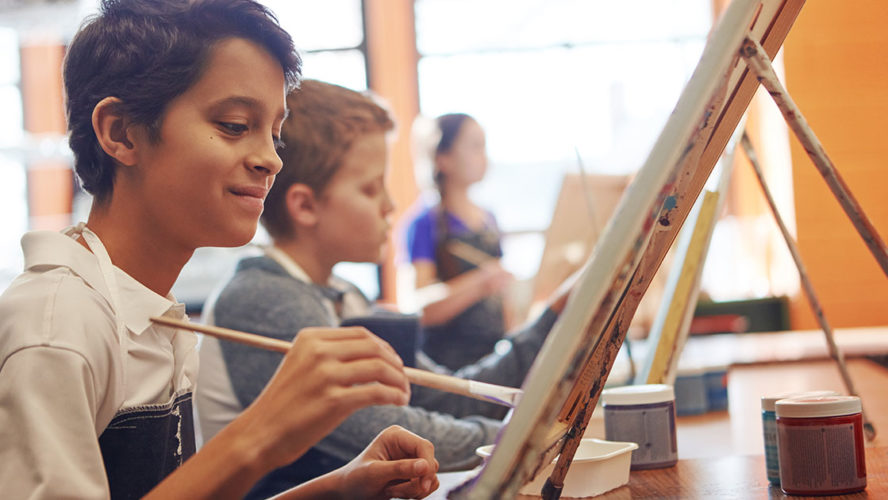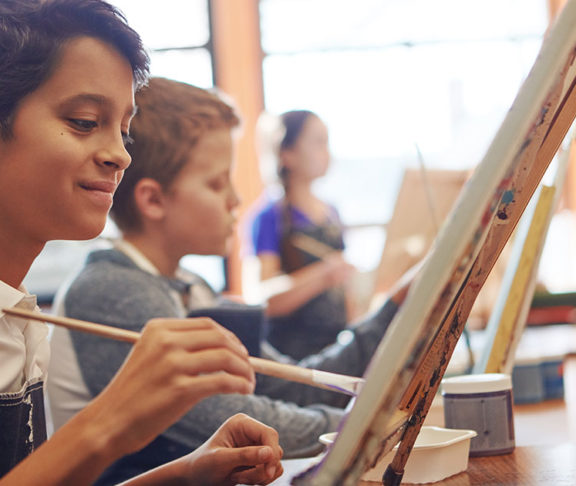A growing body of research shows how the benefits of an arts education extend far beyond the classroom.
Art has been called the first language of childhood. Even before they can speak, children communicate and learn through visual expression. Grasping paint brushes and crayons helps children develop the fine motor skills they need to write and tie their shoes. Unstructured play with art materials fosters spatial reasoning skills and reinforces concepts like cause and effect. In sharing their artwork, children build confidence, strengthen important relationships, and expand their vocabularies.
The benefits of art class do not end in early childhood. According to data published by Americans for the Arts, recent studies have found positive correlations between student success and arts learning. Key findings show that an education rich in the arts can help close achievement gaps, motivate students to continue learning, improve academic skills, boost standardized test scores, and lower dropout rates. There is also growing evidence that integrating the arts into other subjects may enhance learning. A four-year study conducted through the Chicago Arts Partnerships in Education’s (CAPE) Partnership in Arts Integration Research (PAIR) paired professional teaching artists with elementary school classrooms to measure the impact of arts-integration in subjects like math and language arts. Researchers found that students in arts-integrated classrooms were more engaged and had higher test scores than students who received only conventional instruction.
Long-term benefits
Critically, the skills gained with a visual arts education translate to success in the workforce. In its 2010 Global CEO Study, IBM surveyed 1,500 CEOS worldwide across 33 industries. Approximately 60% of those surveyed cited creativity as the most important leadership quality for success in business.
Despite these benefits, too few American students receive a quality arts education. According to data published by Americans for the Arts, the demands of academic accountability measures and other factors have marginalized art classes in school curriculums. A 2011 research study published by the National Endowment for the Arts showed that rates of arts education declined from 1982 to 2008 and that those declines were concentrated among low-income students and students of color.
Nine in every ten Americans agree that “the arts are important for a well-rounded education,” according to a public opinion survey conducted by Americans for the Arts. As the only institutions with the capacity to reach nearly every American student, schools are vital for ensuring equitable access to the arts. By better understanding the deep connections between students, communities, and the arts, we can be better advocates for policies and programs that support artists and arts education programming nationwide.

